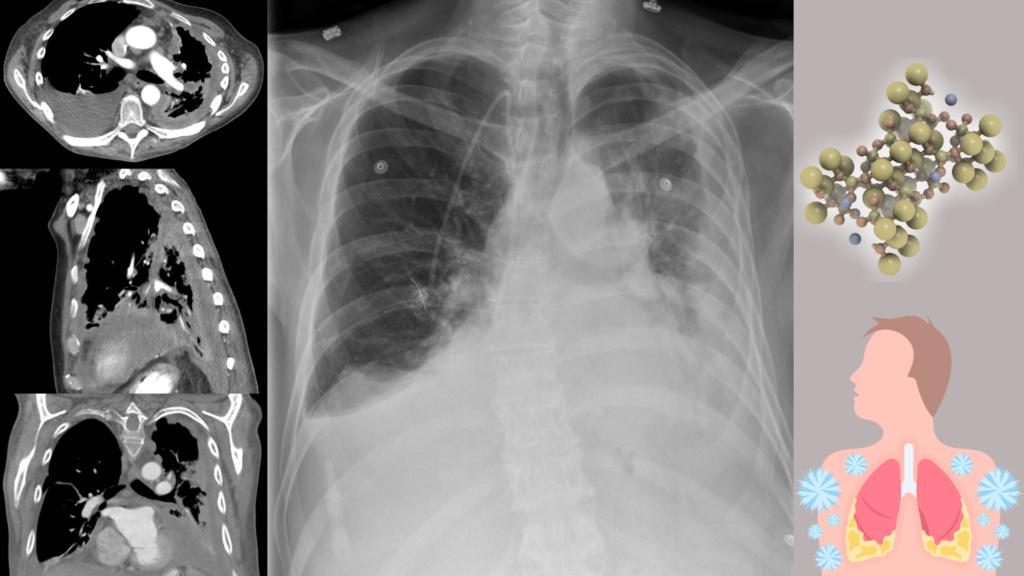In the pursuit of creating safer living environments, understanding the health risks associated with asbestos and lead exposure is crucial. These hazardous materials, once widely used in construction and various household products, have left a legacy of potential health dangers that can affect individuals in significant ways. This article delves into the top health risks linked to asbestos and lead exposure, emphasizing the importance of awareness and precaution.

Asbestos Exposure and Its Health Risks
Asbestos is a group of naturally occurring fibrous minerals known for their durability and resistance to heat. While these properties made asbestos a popular choice for insulation, roofing, and flooring, it also posed significant health risks when fibers became airborne and inhaled.
Read: Occupational cancer Risks
1. Mesothelioma
One of the most severe health risks associated with asbestos exposure is mesothelioma, a rare and aggressive form of cancer. Mesothelioma primarily affects the lining of the lungs (pleura) but can also occur in the lining of the abdomen (peritoneum) and other organs. Symptoms often include chest pain, shortness of breath, and fluid buildup around the lungs. Unfortunately, mesothelioma has a long latency period, meaning it can take decades for symptoms to appear after initial exposure.
2. Lung Cancer
Asbestos exposure is a well-documented cause of lung cancer, particularly among individuals who smoke. The inhalation of asbestos fibers can lead to the development of malignant tumors in the lungs. Early symptoms may include a persistent cough, coughing up blood, and difficulty breathing. As with mesothelioma, the risk of developing lung cancer increases with the duration and intensity of asbestos exposure.
3. Asbestosis
Asbestosis is a chronic lung disease resulting from prolonged exposure to asbestos fibers. It occurs when inhaled fibers cause lung tissue to become scarred, leading to symptoms such as shortness of breath, persistent cough, and chest tightness. Asbestosis can significantly impair lung function and quality of life, and in severe cases, it can be fatal. There is currently no cure for asbestosis, making prevention and early detection essential.
Lead Exposure and Its Health Risks
Lead is a heavy metal that was commonly used in paints, plumbing, and various consumer products. Despite its widespread use, lead exposure is highly toxic, especially for young children and pregnant women. Lead can enter the body through ingestion or inhalation of dust, and once absorbed, it can have detrimental effects on nearly every organ system.
1. Neurological Damage
One of the most concerning health risks associated with lead exposure is its impact on the nervous system. In children, lead exposure can lead to cognitive impairments, learning disabilities, and behavioral problems. High levels of lead can cause severe neurological damage, resulting in developmental delays, decreased IQ, and attention deficit disorders. In adults, lead exposure can cause memory loss, difficulty concentrating, and mood disorders.
2. Kidney Damage
Lead exposure can also have detrimental effects on the kidneys. Chronic exposure can lead to nephropathy, a type of kidney disease characterized by the gradual loss of kidney function. Symptoms may include fatigue, high blood pressure, and protein in the urine. In severe cases, lead-induced kidney damage can progress to kidney failure, requiring dialysis or a kidney transplant.
3. Reproductive Issues
Lead exposure poses significant risks to reproductive health. In women, high levels of lead can cause menstrual irregularities, reduced fertility, and complications during pregnancy, such as miscarriage and premature birth. In men, lead exposure can result in decreased sperm count and motility, leading to reduced fertility. Prenatal exposure to lead can also affect fetal development, causing low birth weight and developmental abnormalities.
Preventing and Mitigating Exposure
Preventing exposure to asbestos and lead is critical for protecting your health and the health of your loved ones. Here are some key steps to consider:
For Asbestos:
- Professional Inspection: Have your home inspected by certified professionals like asbestos consultancy to identify asbestos-containing materials.
- Safe Removal: If asbestos is present, hire licensed asbestos abatement professionals to safely remove and dispose of it.
- Regular Monitoring: Monitor areas where asbestos may be present, and avoid disturbing these materials.
Read: Essential Protective Clothing and Equipment for Safely Handling Asbestos
- Lead Testing: Test your home for lead-based paint, especially if it was built before 1978. Also, test your water supply for lead contamination.
- Safe Renovations: Use lead-safe certified contractors for renovation or repair work that may involve lead-based materials.
- Maintain Cleanliness: Regularly clean surfaces to reduce lead dust and ensure good hygiene practices, especially for children.
Conclusion
Awareness and proactive measures are vital in mitigating the health risks associated with asbestos and lead exposure. Understanding these risks empowers you to take the necessary steps to protect yourself and your family from these hazardous materials. By prioritizing safety, conducting proper testing, and relying on professional services for removal and remediation, you can create a healthier and safer living environment. Transform your living space with expert renovation services from NYCrestoration.com, where quality craftsmanship meets innovation in every project.
Read: E-Books:Introduction to Health and Safety in construction,2nd Ed




